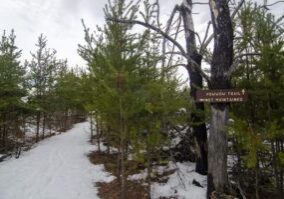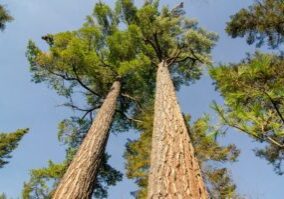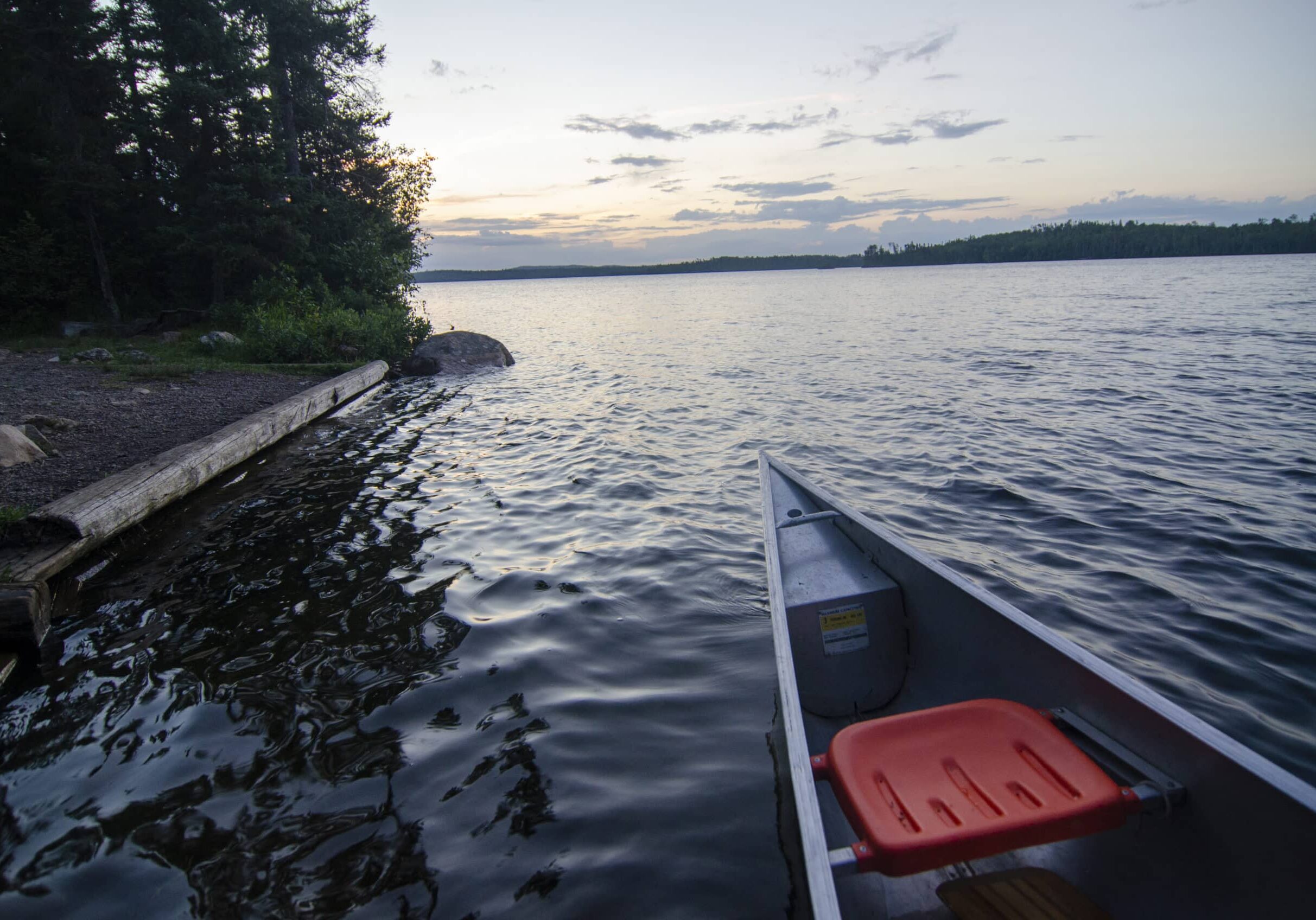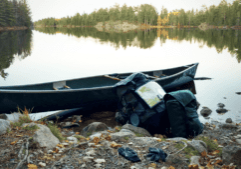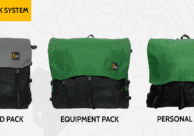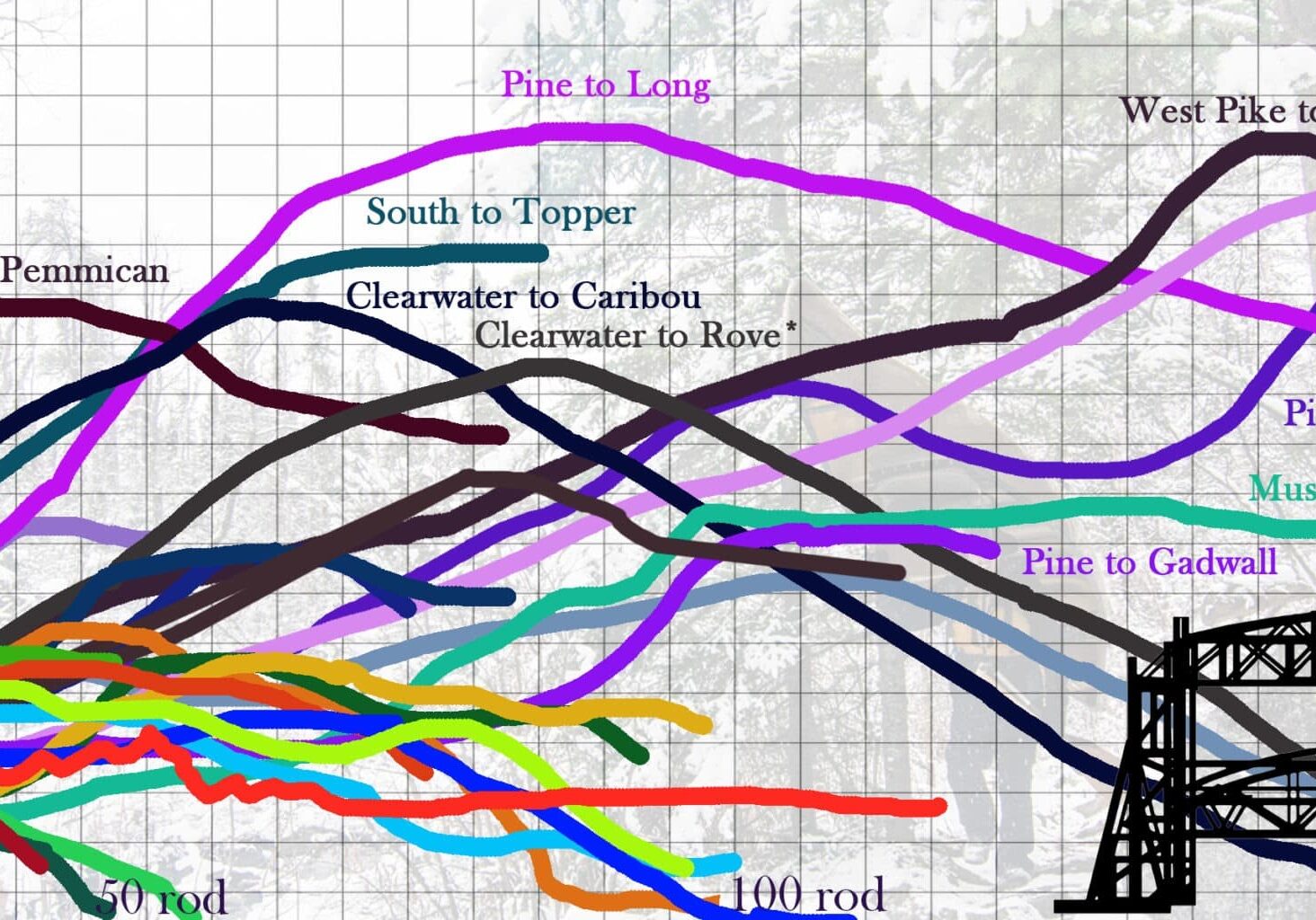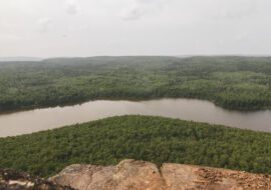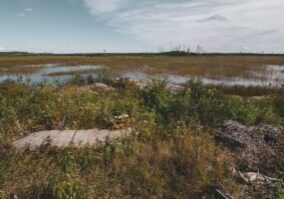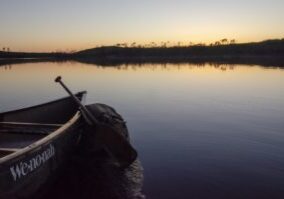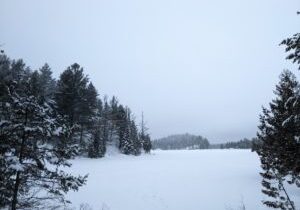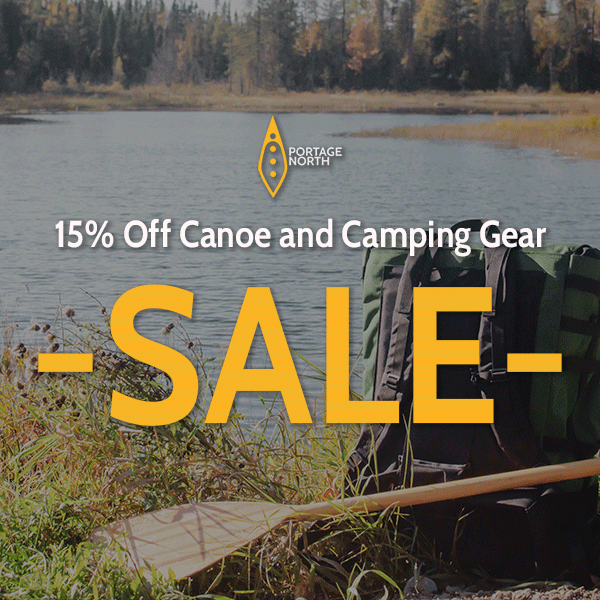Finding a great campsite can be one of the great joys of a canoe trip. Waking up in a stand of majestic pines, enjoying a cool breeze rolling off the lake on a midsummer afternoon, and cooking over a campfire without worrying about bugs can make a campsite that much more memorable.
Occasionally, these sites are discovered by delightful accident. But consistently finding the best campsites often takes a little more work and wilderness savvy. Here are a few subtle guide tricks for finding memorable Boundary Waters campsites.
1. Find a west-facing site
Wind often comes from the west in the BWCAW. In the summer, finding a site with western exposure helps keep camp cool and blow away the mosquitoes. Of course, in early spring and fall when bugs aren’t an issue, just the opposite might hold true if you want to escape the wind in the colder temperatures.
2. Look for mature pines clear of underbrush
Sites with mature pines and an open forest floor often have fewer bugs.
While thick underbrush and swampy areas hold bugs, the breezy, open forest floor and lack of favored habitat in some mature pine stands tend to keep the bugs away for much of the day.
Not to mention that camping in a majestic pine forest carpeted in soft pine needles is one of the joys of canoe country.
3. Travel early in the day and beat the crowds
Sunrise is often the most peaceful, beautiful time of day in the Boundary Waters. The wind has yet to pick up, the wildlife is undisturbed and active, and many other groups are still asleep. And paddling in the cool of morning is a welcome escape from hot summer afternoons.
While the BWCAW is still a secluded refuge from civilization, during peak paddling season (late June through mid August) you’ll probably run into plenty of other paddlers, especially near entry points and the more popular lakes. By aiming to reach your destination campsite around lunch or shortly thereafter, you’ll beat most of the crowds and often have the first choice of campsites on your target lake. And it’s a mighty fine feeling to eat lunch at that beautiful five-star campsite while watching other groups paddle by. Arriving early in the day also allows time to relax and enjoy the rest of the afternoon in camp.
4. Scout ahead of time with online tools
Using the internet to scout campsites and portages might feel like cheating to some. It’s completely understandable if this diminishes the simplicity and delightful unknowns of a BWCAW canoe trip for you. But knowing the lay of the land and reading trip reports from other paddlers can lead to a very enjoyable trip, still full of adventure and curiosity fueled by the hints and descriptions found online. When time in the woods is at a premium (which it is for most folks, myself included), knowing which campsites are favorable can save time and travel. And a great campsite can make a trip that much sweeter.
Two favorites include paddleplanner.com and bwca.com
5. Look out for widowers!
Be sure to check your site for dead or unhealthy trees or branches hanging over tent pads, especially if in the warm months of summer when thunderstorms are common. Find the “lightning tree” (the tallest in the area) to gauge where lightning strikes pose the most risk, as root systems sprawling away from the tree can carry a lightning strike a long distance. Keep in mind that wind often comes out of the west, though during storms wind direction can be unpredictable. Straight-line winds in the BWCAW are not a joke, and injury or worse from a fallen tree is not worth saving the little bit of extra time it takes to find a site without hazards.
Finding a campsite with fewer bugs, relief from the weather, and a chance to avoid the crowds can help make a canoe trip that much sweeter.
While favorite sites are occasionally discovered unexpectedly, following these tips will help you find favorable campsites more consistently on your next trip into canoe country.
Sign up for our newsletter to receive updates about new articles, great deals, and information about the activities you love and the gear that makes them possible:
Have You Read Our Other Content?
How to Hike the BWCA this Fall
For those of us whose Boundary Waters trips don’t end with canoe season, Fall can be a challenging time to decide what activities to pursue. As the ice begins to line the outer edges of the lakes and canoeing becomes tougher, it’s just the perfect time of the year to hit the trails and backpack…
How Trees Tell the Story of the BWCA
Today is the International Day of Forests which means it’s the perfect day to celebrate the trees of the BWCA. The Boundary Waters are a unique mosaic of forests born out of wildfire, windstorms, logging, and the passage of time. Despite the history of disturbance, the Boundary Waters contain the largest tracts of old growth…
Finding Solitude in the BWCAW
Though the Boundary Waters is the most visited wilderness area in the United States, it’s refreshingly empty compared to most national or state parks and seldom feels crowded. For many, the occasional encounter with another group is no big deal. But all of us dream about wilderness solitude at some point in our outdoor career:…
How to Pack for a Canoe Trip – The Three-Pack System
One of the technical ways flatwater canoe trips are packed differently than backpacking trips is in how to organize gear. In a backpacking trip, the gear in the pack often belongs to the person carrying it, with a few communal items like food or shelter divided between party members. The presence of a bulky watercraft to portage…
Upward, upward: Which portage is the tip top?
What is the most difficult portage in the BWCA? This is an impossible question to answer. Is it the steepest? How about the longest? How about the one that has the most mud, the most bugs, the slipperiest rocks, or the worst landing? In truth, the most difficult portage is an entirely subjective question bent…
Map Mondays – Week 6 – Duncan to Duncan
As part of our continuing series on the “route planning game,” we are creating routes using randomly selected entry points, exit points, and number of days to create unique and fun BWCA routes. This week is a nice sightseeing and exploring kind of route entering at Duncan Lake east of the Gunflint Trail. Total Mileage:…
An Expert’s Perspective on BWCA Forests
Lee Frelich, Director of The University of Minnesota Center for Forest Ecology, is one of the foremost experts on the forests of the BWCAW and the fire ecology that dictates its composition. We interviewed him to gain his invaluable insight into this incredible ecosystem, its history, and a glimpse into its future. Question 1. For…
10 Tips and Tricks for Nightime Canoe Travel
The vast majority of BWCA visitors paddle and hike during daylight hours and for good reason. It’s safer, there’s more to see, and daylight travel aligns with normal sleep cycles. Night travel, on the other hand, provides a higher risk of getting lost while paddling; it’s also easier to fall and get hurt while portaging.…

